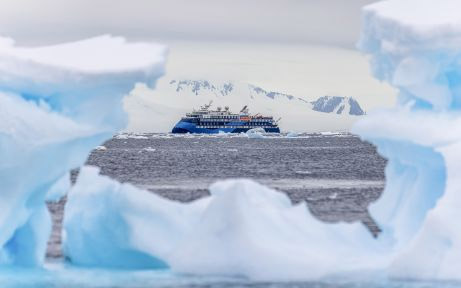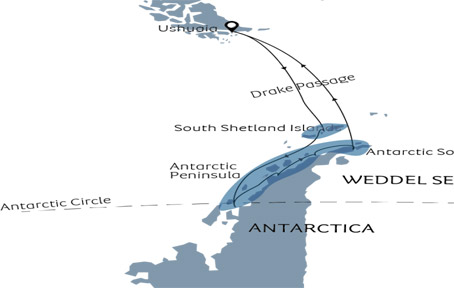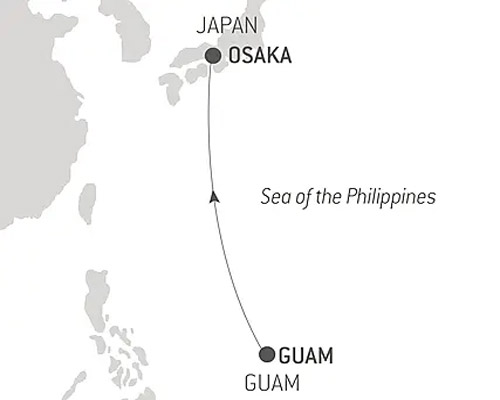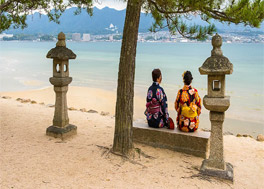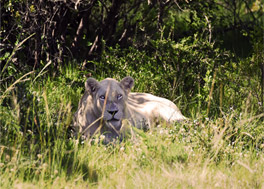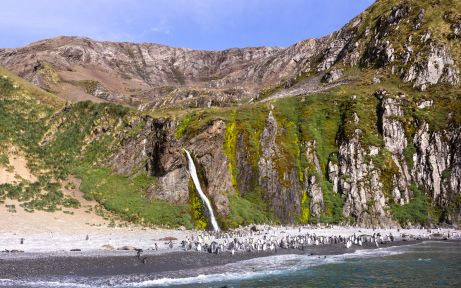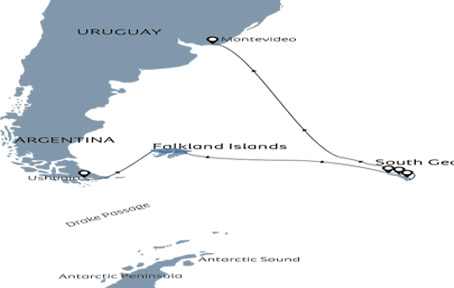
Expert guidance for your cruise vacation!
Let us connect you with our cruise expert to help you to plan the best vacation at the lowest possible price. For fastest service, call us at +91 9920688575
Adventure in the Bissagos Islands
Cruise Line: Ponant Cruises
Ship: Le-Bellot | Le-Laperouse
Sailing Dates: Jan 24 2026
Port: Dakar - Dakar
Adventure in the Bissagos Islands
Ports of Call & Excursions

Day 1 - Dakar
On the tip of the African continent, the buzzing capital of Senegal stretches along the narrow peninsula of Cape Verde. You may be overwhelmed by its sheer size, but Dakar will win you over with its richly diverse districts, appealing cultural scene and rich natural surroundings. In the historic centre, you'll enjoy the pell-mell of colours and tasty delights in Kermel market. Far from the effervescence of the city, Gorée Island, a UNESCO World Heritage Site, is known as a place of remembrance, having once been a slave trade outpost. On the other side of the plateau, the wild Madeleine islands are protected by a national park.

Day 2 - At sea
During your journey at sea, make the most of the many services and activities on board. Treat yourself to a moment of relaxation in the spa or stay in shape in the fitness centre. Depending on the season, let yourself be tempted by the swimming pool or a spot of sunbathing. This journey without a port of call will also be an opportunity to enjoy the conferences or shows proposed on board, depending on the activities offered, or to do some shopping in the boutique or to meet the PONANT photographers in their dedicated space. As for lovers of the open sea, they will be able to visit the shipâs upper deck to admire the spectacle of the waves and perhaps be lucky enough to observe marine species. A truly enchanted interlude, combining comfort, rest and entertainment.

Day 3 - Kere, Bijagos
The private island of Kere is an unspoiled Eden, a one-hectare (two-acre) stretch of tropical forest in the heart of the Bissagos Islands. One original feature of this island is that a small, sustainable and fair-trade ecotourism business was developed upon it. On the islandâs magnificent beach, a Frenchman has set up a business to show people around this exceptional natural environment or to take them out for some game fishing, particularly in search of tarpon, a fish weighing over a hundred kilos (220 pounds). The bungalows made from earth and straw blend into the idyllic setting and reflect the mindset of the isletâs owner: authentic and respectful of nature and people.

Day 3 - Carache Island, Bijagos
In the midst of a rich natural environment, you will enjoy a fascinating encounter with the Bijagos, who have been successful at taming their environment and preserving their ancestral way of life. Five villages provide a home for the islandâs few thousand inhabitants, who rely on a subsistence economy: they take from nature only what they need, they cultivate rice, breed chickens and pigs, fish on a small scale and use all the parts of the oil palm. Cob huts with thatched roofs are the traditional dwellings. Among other things, you will be able to enjoy a wonderful show of authentic traditional dancing.

Day 4 - Orango Island, Bijagos
Some 20 kilometres off the coast of west Africa, the Bissau-Guinean archipelago of Bissagos is famous for its abundant biodiversity. The richness of its marine animal and plant life afforded it the status of Biosphere Reserve by UNESCO: dolphins, green tortoises, monkeys, striped antelopes and hundreds of thousands of migrating birds find refuge here. Composed of five islands and several islets, Orango is the largest and most mysterious island in the archipelago. Its national park and marine protected area lie in the heart of the Biosphere Reserve. During your zodiac outings, you will set off to discover this preserved environment, home to the Bijogo people, the true custodians of this sanctuary.
Â

Day 4 - Uno Island, Bijagos
Covered in beautiful savannah, paddy fields and lush forests, the island of Uno, or Ilha de Uno, is one of the most populated in the Bissagos archipelago. In its many villages, life follows the pace of the everyday scenes and traditions of the Bissago people. The lifestyle of these island people remains relatively untouched by colonial domination and external influences, and still honours animist beliefs and rites, such as the fanados, which are coming-of-age initiations for young men and women that involve them spending four months in the forest with the village elders. By sanctifying the natural environment, the islanders are protecting the archipelagoâs unique biodiversity.

Day 5 - Orango Island, Bijagos
Some 20 kilometres off the coast of west Africa, the Bissau-Guinean archipelago of Bissagos is famous for its abundant biodiversity. The richness of its marine animal and plant life afforded it the status of Biosphere Reserve by UNESCO: dolphins, green tortoises, monkeys, striped antelopes and hundreds of thousands of migrating birds find refuge here. Composed of five islands and several islets, Orango is the largest and most mysterious island in the archipelago. Its national park and marine protected area lie in the heart of the Biosphere Reserve. During your zodiac outings, you will set off to discover this preserved environment, home to the Bijogo people, the true custodians of this sanctuary.
Â

Day 5 - Uno Island, Bijagos
Covered in beautiful savannah, paddy fields and lush forests, the island of Uno, or Ilha de Uno, is one of the most populated in the Bissagos archipelago. In its many villages, life follows the pace of the everyday scenes and traditions of the Bissago people. The lifestyle of these island people remains relatively untouched by colonial domination and external influences, and still honours animist beliefs and rites, such as the fanados, which are coming-of-age initiations for young men and women that involve them spending four months in the forest with the village elders. By sanctifying the natural environment, the islanders are protecting the archipelagoâs unique biodiversity.

Day 6 - Joao Vieira Island, Bijagos
In the far south-east of the Bissagos Islands, João Vieira is a small unspoiled island in the João Vieira and Poilão Marine National Park. This park, where a number of sacred sites can be found, is home to a wonderful biodiversity. On the practically uninhabited island of João Vieira, the Bijagos have set up temporary camps for fishing or for collecting the fruit of oil palms. Like everywhere else in the archipelago, the local population displays ingenuity to adapt to this incredible environment.

Day 6 - Cavalos Island, Bijagos
A UNESCO Biosphere Reserve, the island of Cavalos is the second-largest nesting site in West Africa. Here you will be able to observe many bird species, including terns, in particular near the freshwater lake. Take a stroll on the beach full of shells, stretching all the way around the islandâs 6-km (3.8-mile) circumference. Some rocks have mango trees growing on them, which just rise above the surface during high tide. The interior of the island, blanketed in palm trees and high grasses, is inhabited by a colony of wild pigs.

Day 7 - Bolama
Bolama, the capital of Portuguese Guinea from the late 19th century to the end of the 1930s, is shrouded in the surreal and poetic atmosphere of a ghost town forgotten by time. Along the streets covered in ochre earth, the vestiges of neoclassical colonial buildings hint at what was once the sumptuous government palace or the governorâs residence. Now neglected, this hard-to-reach natural harbour surrounded by mangrove swamps once served as an outpost for keeping a close eye on the Guinean population that had come to seek refuge on these remote islands of the Bissagos archipelago to escape their colonisers.

Day 7 - Canhabaque, Bijagos
Canhabaque Island, also known by the name Roxa, is covered in lush vegetation and boasts pretty beaches alternating with rocky formations. The first island in the archipelago to be inhabited, it is today home to a community of around 2,500 inhabitants, spread across various tabancas (rural villages). Long closed to tourism, it is considered the most traditional island in the whole archipelago in terms of customs and lifestyle. It competes with Caravela for the reputation of the most beautiful island. It has an animist and matrilineal society; women are highly predominant in the management and maintenance of balance in the tabancas.

Day 8 - Caravela Island, Bijagos
Dotted with authentic and wild landscapes, the Bissagos archipelago is a constellation of islands covered in savannah, forests of palm trees, mangrove trees, silk-cotton trees, baobabs and, in large part, mangrove swamps. From the island of Caravela, you will be able to set out in a Zodiac® dinghy to explore the mangrove and observe the African grey hornbill, the palm-nut vulture, the kingfisher, the weaverbird and some of the many species that fly to this region each year. It is the second most important site for migratory birds in West Africa, after Banc dâArguin in Mauritania: herons, curlews, red-chested swallows. In full immersion, far from the beaten track, your discovery of the archipelago will take on an air of adventure.

Day 9 - Dakar
On the tip of the African continent, the buzzing capital of Senegal stretches along the narrow peninsula of Cape Verde. You may be overwhelmed by its sheer size, but Dakar will win you over with its richly diverse districts, appealing cultural scene and rich natural surroundings. In the historic centre, you'll enjoy the pell-mell of colours and tasty delights in Kermel market. Far from the effervescence of the city, Gorée Island, a UNESCO World Heritage Site, is known as a place of remembrance, having once been a slave trade outpost. On the other side of the plateau, the wild Madeleine islands are protected by a national park.
8 Days - In the Wake of the Spanish Armadas [Oranjestad to Colon]
Cruise Line: Windstar Cruise
Ship: Wind Surf
Sailing Dates: Feb 01 2026
Port: Oranjestad to Colon
8 Days - In the Wake of the Spanish Armadas [Oranjestad to Colon]
| Day | Port | Arrive | Depart |
|---|---|---|---|
| 0 | ORANJESTAD | 06:00 PM | |
| 1 | AT SEA | 12:00 PM | 05:00 PM |
| 2 | SANTA MARTA | 09:00 AM | 06:00 PM |
| 3 | CARTAGENA | 9:00 AM | 6:00 PM |
| 4 | AT SEA | 9:00 AM | 6:00 PM |
| 5 | BOCAS DEL TORO | 9:00 AM | 6:00 PM |
| 6 | AT SEA | 9:00 AM | 6:00 PM | 7 | COLÃN | � | � |
| 8 | COLÃN | 07:00 AM | � |
History and culture visiting Caribbean jewels
Cruise Line: Ponant Cruises
Ship: Leponant
Sailing Dates: Feb 02 2026 | Mar 03 2026 | Apr 04 2026
Port: Pointe-a-Pitre - Marigot
History and culture visiting Caribbean jewels
Ports of Call & Excursions

Day 1 - Pointe-a-Pitre
At the crossroads of cultures, where European influence mingles with the richness of the Caribbean and the diversity of indigenous traditions, Pointe-Ã -Pitre promises a unique experience. Here, nestled on the southern coast of the island of Grande-Terre in Guadeloupe, in the heart of the Caribbean Sea, you will fall in love with the heavenly landscapes that reveal themselves to you, including white-sand beaches, verdant mountains, and lush tropical forests. Along the bustling streets of the city, you will discover Creole authenticity through the colourful markets, the traditional wooden houses, and the warm hospitality of the locals.

Day 2 - Les Saintes
During the feast of All Saints in 1493, Christopher Columbus discovered this archipelago of nine islands that he named "The Saints". Today, only two of them are inhabited. Terre de Haut, in the east, is dominated by the Morne Mire hill; at the summit stands Fort Napoleon, paying homage to the islands' history. In the heart of the botanical garden, shared by iguanas and cacti, there is an exceptional view of the Baie des Saintes, one of the most beautiful in the world. The long shady beach of Pompierre, where it is forbidden to drop anchor, is a peaceful place for a swim, while Pain de Sucre Beach offers wonderful opportunities for snorkelling. On the island, donât forget to taste the local speciality, the âtourment dâamourâ, a cake made with coconut.

Day 3 - Falmouth Bay
Located to the south of the island of Antigua and Barbuda, Falmouth Bay is home to a marina that is the perfect starting point for visiting Nelsonâs Dockyard, where the former naval base and former home of the British Admiral Horatio Nelson can be found. This village was built in 1725 to act as a base for the squadrons of ships that used to patrol the waters of the West Indies to ensure British naval supremacy. It is the last naval dockyard of the Georgian period to be so well preserved and still active. This UNESCO World Heritage Site includes a collection of buildings and port facilities surrounded by a fortified compound.

Day 4 - Barbuda
During your port of call in Barbuda, an island influenced by British culture in the north of the Lesser Antilles, youâll discover idyllic beaches of white powder-like sand bathed by turquoise waters of striking intensity. The very British colonial atmosphere of English Harbour, a former Royal Navy base, mixes with creole culture in a happy union. This Eden, which has managed to stay calm and intimate, is brimming with very wild fauna and flora. Arts and crafts are present in the markets and shops, where youâll find wooden statuettes, printed fabrics and very good rum produced in the islandâs distilleries.

Day 5 - Charlestown, Nevis
Opposite Saint-Christopher island, Nevis will win you over by its more easy-going rhythm than its neighbour, and by its tranquil atmosphere. Go ahead and explore the rich history of this island, admire its Georgian architecture in Charlestown and smell the wonderful scent of the tropical flowers in Nevisâs botanical garden. The sumptuous landscapes that adorn this volcanic island offer you pleasant hiking opportunities at the foot of Nevis peak. And to cool down, youâll enjoy taking a dive into the turquoise waters, so characteristic of the Caribbean...

Day 6 - Gustavia
Lovers of this island call it Saint-Barth. This French island in the Lesser Antilles was discovered by Christopher Columbus in 1493. Ever since, this tiny mountainous volcanic gem with its unspoilt nature has been enchanting visitors. You will enjoy the beauty of its large paradisiacal beaches, plus the charm and refinement of its old wooden houses and its sumptuous colonial manors. Although, as you saunter through the rues de Gustavia or Saint-Jean, youâll come across jewellers, top fashion boutiques and fine restaurants, there is also a simplicity that money canât buyâ¦

Day 7 - Road Bay, Anguilla
Anguilla is a small and idyllic island with a concentration of many treasures: fine sandy beaches, creeks, caves and prehistoric petroglyphs, former colonial houses, natural reserves and the famous golf course designed by Greg Norman. he various evocations of the main islandâs shape gave the archipelago its name: an âarrow headâ for the Amerindians and an âeelâ for Christopher Columbus. You will be able to enjoy the tranquillity of Sandy Ground Beach and, conditions permitting, you may get the chance to land on the small sand bar opposite, the idyllic Sandy Island.

Day 7 - Prickley Pear Cays
Located 5 miles north of Anguilla, the twin islands of Prickly Pear East and West are separated by a narrow channel. Prickly Pear East consists of a huge white sandy beach and rocky outcrops offering excellent snorkelling possibilities. Behind the main beach, there is a small pool where the black-necked stilt comes to feed. The harder-to-access Prickly Pear West has a small beach of low limestone cliffs dotted with bushes. The waters surrounding the cays of Prickly Pear are protected by the Anguilla Marine Park. Green and Hawksbill sea turtles, endangered species, nest on these beaches. The island is also home to an indigenous iguana population as well as a colony of Anguilla laughing gulls. As you sail around Prickly Pear West, it will be easy to observe many birds along the cliffs, including red-billed tropicbirds, brown noddies, brown boobies and little terns. This is also where the only colony of brown pelicans nesting in Anguilla can be found: it is a species of regional importance.

Day 7 - At sea aboard Le Ponant
During your day at sea on board Le Ponant, make the most of your free time and the comfort of your ship for a moment of rest or conviviality. If the weather is right, let yourself be tempted by a spot of sunbathing. This day without a port of call will also be an opportunity to do some shopping in the boutique and share the highlights of your cruise with the other passengers. As for lovers of the open sea, they will be able to visit the shipâs upper deck to admire the spectacle of the waves and perhaps be lucky enough to observe marine species. A truly enchanted interlude, combining relaxation, sharing and the pleasure of sailing on a yacht.

Day 8 - Marigot
Located on the west coast of the French side of Saint Martin, an island in the north-east of the Caribbean Sea, Marigot has stunning discoveries in store for you. Its streets are home to old Creole huts, the traditional dwellings in the 19th century, as well as a host of luxury boutiques and artist studios. Overlooking Marigot Bay and facing Anguilla, Fort Louis is an ideal spot from which to admire the Simpson Bay Lagoon and the surrounding small, lush mountains. For those who enjoy walking, taking a lovely stroll from the Fort Louis marina via the market, is an opportunity to fully enjoy the easy way of life in this charming, picturesque town.
Ocean Voyage: Dunedin - Lautoka
Cruise Line: Ponant Cruises
Ship: Le Soleal
Sailing Dates: Feb 16 2026
Port: Dunedin - Lautoka, Viti Levu Island
Ocean Voyage: Dunedin - Lautoka
Ports of Call & Excursions

Day 1 - Dunedin
Dunedin is New Zealand's oldest city and is often referred to as the Edinburgh of New Zealand. This city of the south, wears its Scottish heritage with pride. The city contains some of the best preserved Victorian and Edwardian architecture in the Southern Hemisphere. The Silverpeaks hinterland to the North West provides a picturesque backdrop and The Otago Peninsula, which lies within the city boundaries, has internationally renowned wildlife reserves, including the only mainland breeding colony of Northern Royal Albatross.

Day 2Â Â - 7 - At sea
During your journey at sea, make the most of the many services and activities on board. Treat yourself to a moment of relaxation in the spa or stay in shape in the fitness centre. Depending on the season, let yourself be tempted by the swimming pool or a spot of sunbathing. This journey without a port of call will also be an opportunity to enjoy the conferences or shows proposed on board, depending on the activities offered, or to do some shopping in the boutique or to meet the PONANT photographers in their dedicated space. As for lovers of the open sea, they will be able to visit the shipâs upper deck to admire the spectacle of the waves and perhaps be lucky enough to observe marine species. A truly enchanted interlude, combining comfort, rest and entertainment.

Day 8 - Lautoka, Viti Levu Island
Lautoka is the second largest city of Fiji. Located on the western side of the island of Viti Levu, 24 kilometres north of Nadi. Lying in the heart of Fiji's sugar cane growing region, it is known as the Sugar City. Lautoka is the gateway to Fijiâs âSun coastâ a land of abundant sunshine, azure skies and dramatic grass-covered peaks chequered with sugar-cane fields, rural villages and quaint market towns.Â
Odyssey in the heart of Japan's subtropical islands[Hong Kong - Naha, Okinawa]
Cruise Line: Ponant Cruises
Ship: Le-Jacques-Cartier
Sailing Dates: Feb 22 2026
Port: Hong Kong - Naha, Okinawa
Odyssey in the heart of Japan's subtropical islands[Hong Kong - Naha, Okinawa]
Ports of Call & Excursions

Day 1 - Hong Kong
Hong Kong, known as the âFragrant harbourâ, bordered by the South China Sea, is a heady place attracting tourists from the world over. This former British colony today combines ultramodern shopping malls and authentic markets like the Ladieâs Market or the night market on Temple Street. At first sight, youâll be overwhelmed by the cityâs architecture which, because of lack of ground space, reaches skywards, with its 1,250 skyscrapers and other towers. Believing is seeing, so if you go up to Victoria Peak, the highest point on the island, youâll see a dizzying and unforgettable view of the bay.

Day 2 - 3 - At sea
During your journey at sea, make the most of the many services and activities on board. Treat yourself to a moment of relaxation in the spa or stay in shape in the fitness centre. Depending on the season, let yourself be tempted by the swimming pool or a spot of sunbathing. This journey without a port of call will also be an opportunity to enjoy the conferences or shows proposed on board, depending on the activities offered, or to do some shopping in the boutique or to meet the PONANT photographers in their dedicated space. As for lovers of the open sea, they will be able to visit the shipâs upper deck to admire the spectacle of the waves and perhaps be lucky enough to observe marine species. A truly enchanted interlude, combining comfort, rest and entertainment.

Day 4 - Ishigaki
Located to the south of the main island of the Yaeyama archipelago, Ishigaki boasts all the aspects of an authentic piece of paradise. You have guessed it, you do not come here for its skyscrapers but for its pure emerald waters and idyllic beaches. The waters off Shiraho, on the island's south-west coast, have one of the largest areas of blue coral in the world.

Day 5 -Taketomijima
Off the coast of the Okinawa Prefecture, Taketomi Island (Taketomijima) is fascinating for its traditional character, preserved in a beautiful, lush setting. Like its big sisters, Ishigaki and Kuroshima, this island in the Yaeyama archipelago is the ideal destination for an immersion in typical landscapes and the insular way of life of the former Ryukyu Kingdom. Here, time seems to have stood still. There are very few cars about; bicycles and carriages drawn by imposing oxen remain the only means of transport. This is an ideal opportunity to wander through the picturesque streets lined with traditional dwellings with red-tiled roofs and lion-shaped shisa statues placed in front of the vast majority of houses to keep evil spirits at bay.

Day 6 - Iriomotejima
Nestled in the very heart of the Yaeyama archipelago, Iriomote Island conjures visions of a hidden paradise. With 90% of the island covered by thick jungle, crossed by rivers and impressive mangrove forests, Iriomote is an ideal destination for fans of large preserved spaces. With exceptional fauna and flora, this lush jewel is home to many endemic species: you may be lucky enough to get to glimpse an Iriomote cat or a crested serpent eagle. During this port of call, you will also have the possibility of admiring the captivating underwater world during a free diving session or contemplating this lush jungle close up on a cruise along the calm waters of the islandâs rivers.

Day 7 - Yonagunijima
The geographic situation of the island of Yonagunijima, the most remote and western in the Japanese archipelago of Okinawa, makes it a wild and preserved territory. Between cliffs plunging into the sea and white sandy beaches, lush meadows and palettes of blue, we can admire the last sunset every day here in the Land of the Rising Sun. The island is also renowned for the Yonaguni horses, a small breed standing only a metre high, which graze freely here. If you dive, Yonagunijima will delight you with its sea beds which are as exceptional as they are mysterious.

Day 8 - Miyakojima
Situated between the East China Sea and the Philippine Sea, Miyakojima is the main island of the Miyako Islands, in the Sakishima archipelago. The fourth largest island in the Okinawa prefecture, it is known for its many sugar cane plantations and some of Japanâs most beautiful beaches. Myriad multicoloured fish await you during unforgettable swims and snorkelling.

Day 9 - Kumejima
Located 90 km (56 miles) to the south-west of Okinawa Honto, Kumejima is a multifaceted island home to natural treasures. Hatenohama, a stunning 7 km-long (4.3 miles) fine-sand beach, promises wonderful carefree moments discovering the exceptional underwater worlds off the coast of Kumejima. Mifuga, a rock formation on the north coast of the island with a hole right through its middle, is a great example of the erosion along the coast. The eastern peninsula offers another geological feature, visible at low tide: 1,000 flat rocks each around one metre (3.2 feet) in diameter, formed by the contraction of lava from a nearby eruption a million years ago. They create a rocky plateau resembling a traditional Japanese tatami, hence the name Tatami-ishi.

Day 10 - Iheyajima
The northernmost island of the prefecture of Okinawa, Iheyajima is a small territory that will take you back in time. At the heart of preserved natural landscapes that are a reminder of the Okinawa of the past, the inhabitants perpetuate traditional culture, particularly by maintaining ancient rites and ceremonies in honour of the divinities of the Ryukyu Kingdom. The island is home to several historic sites, such as the tomb of the ancestors of King Sho Hashi, the unifier of Okinawa and founder of the Ryukyu Kingdom, which was independent from Japan until the end of the 19th century. In this natural setting, whose emblematic Nento-Hiramatsu pine tree is a national monument, perhaps you will enjoy the privilege of seeing a traditional âEisaâ drum performance.

Day 11 - Motobu, Okinawa
To the north of the island of Okinawa, lying between the azure ocean and lush hills, Motobu inspires contemplation. This Japanese paradise, far off the beaten track, unveils landscapes steeped in poetry. A setting of pristine nature, with Mount Yae as a backdrop, Motobu reveals itself through its white sandy forests and its wild and preserved Yambaru forest, home to a rare wealth of fauna and flora. The hiking paths invite you to explore this incomparable nature, where every step reveals breathtaking panoramas and age-old legends.

Day 12 - Zamami
Zamami is an island in the Kerama archipelago, 40 km (25 miles) west of Okinawa Island in the China Sea. Visitors to this 16 km2 (6 mi2) quasi-uninhabited isle are enchanted by the many untouched natural treasures they find here. You will discover a tranquil island with lush vegetation, lined with stunning white-sand bays bathing in the glimmering âKerama blueâ waters around the archipelago. Zamami is also renowned for the beauty of its coral reefs, where multicoloured fish engage in an endless mesmerising ballet. The observation deck on Mount Takatsuki reveals stunning views of the Kerama Islands, granted national park status in 2014. With subtle shifting shades of azure above and all around, this island truly is paradise.

Day 13 - Naha, Okinawa
Capital of Okinawa Prefecture, the town of Naha is located on the south-west of the island. You will love its lively atmosphere, particularly along Kokusai Dori, otherwise known as 'international street'. The picturesque Makishi Public Market, nicknamed 'Naha's kitchen' offers a profusion of colourful fish, Okinawan foodstuffs and local spices and you can sample delicacies cooked on the spot.
Quest for the Circle
Cruise Line: Albatros Cruises
Ship: Ocean Albatros
Sailing Dates: Feb 28 2026
Port: Ushuaia, Argentina to Ushuaia, Argentina
Quest for the Circle
Day 1
ARRIVAL USHUAIA, EMBARKATION
Arrive in Ushuaia, Argentina - the worldâs southernmost city. Explore this vibrant Patagonian city, or stretch your legs in the surrounding forests. Alternatively, consider a day trip off the beaten path into the raw nature of Tierra del Fuego. The island of Tierra del Fuego is a hiker's paradise with rugged snow-capped mountains, glaciers, flower-filled meadows and rich boggy wetlands. In the afternoon, we board our vessel, waiting to welcome us in port.
After our mandatory safety drill, our expedition begins as we navigate through the calm waters of the famous Beagle Channel (named for Charles Darwin's ship). This steep-sided strait divides southern Tierra del Fuego between Chile and Argentina, and has been the jumping-off point for thousands of expeditions into the unknown. Watch out for whales and dolphins as we sail off the edge of the map into the tempestuous Drake Passage.
Day 2-3
AT SEA - CROSSING THE DRAKE PASSAGE SOUTHBOUND
As we sail through the renowned Drake Passage, linking Patagonia to the Antarctic Peninsula, brace yourself for its notoriously turbulent waters and fierce westerly winds, aptly called the Roaring Fifties. Thankfully, our purpose-built expedition vessels ensure a comfortable journey, with their uniquely stable X-Bow and powerful engines, guided by an expert crew. Embrace this exciting crossing, considered a badge of honour by seasoned sailors, as you traverse it twice during our expedition.
In the Drake Passage, our focus turns to preparing for our arrival in Antarctica. Your Expedition Leader will provide thorough safety briefings and guidelines to minimise our impact on this pristine environment. Our dedicated Expedition Team will assist in biosecuring your gear while offering tailored lectures on Antarctic exploration, wildlife, and more.
On the third day, we'll cross the Antarctic Convergence, marked by a sudden drop in temperature as warmer currents give way to Antarctic waters. This transition fosters a surge in marine life, promising sightings of petrels, albatrosses, and possibly even penguins, seals, and whales. Weather permitting, we aim to land on the South Shetland Islands on the afternoon of the third day of our expedition, starting our exploration of the Last Continent.
DAY 4-8
THE ANTARCTIC PENINSULA AND ANTARCTIC CIRCLE
In the days ahead, we venture further west along the Antarctic Peninsula into the Gerlache Strait region. This icy expanse requires meticulous planning by our Expedition Leader and Captain, who will plot a route to explore a variety of sites highlighting the area's staggering natural beauty.
The Gerlache Strait, consisting of the 'spine' of the Antarctic Peninsula and a large number of mountainous glaciated islands, offers a plethora of iconic Antarctic experiences. From Zodiac cruises in Paradise Bay, to witnessing penguins nesting on Cuverville Island, each potential stop promises awe-inspiring encounters. Explore historic huts at Damoy Point, witness humpback whales in Wilhelmina Bay, and marvel at the jaw-dropping scenery of the Lemaire Channel. Wherever we go on the Antarctic Peninsula, endemic wildlife, tantalising history and breathtaking natural beauty abound.
During our time on the Antarctic Peninsula, we will delve southwards, seeking the Antarctic Circle. The exact timing of crossing the Circle depends on wind, sea and ice conditions, and will be determined by the Captain and Expedition Leader. However, crossing the Antarctic Circle, the ultimate bucket list tick, is the main goal of this thrilling expedition!
While our exact destinations will depend on weather and ice conditions, your Expedition Leader will ensure guests are informed of our plans through nightly briefings. In the ever-changing Antarctic environment, flexibility is key as we adapt plans to suit the conditions while offering enriching onboard experiences such as lectures, recaps, wine-tasting, and spa treatments.
DAY 9
THE SOUTH SHETLAND ISLANDS
Our Antarctic odyssey culminates amidst the rugged beauty of the South Shetland Islands. This archipelago represents the northernmost tip of Antarctica, standing proud against the relentless force of the Southern Ocean. Despite the furious elements, the islands boast a remarkable richness of wildlife, with numerous colonies of Gentoo and Chinstrap Penguins dotting the island shores, accompanied by an array of formidable seabirds like the predatory Giant Petrels.
The ice-capped peaks of Livingstone, Greenwich, and King George Islands offer a stunning backdrop to explore. Experience the eerie landscape of Deception Island, an active volcanic crater with black steaming sands and rusting ruins, or witness the bustling penguin colonies on Aitcho and Half Moon Islands, or immerse yourself in the history of Yankee Harbour, once a vital anchorage for sealers.
As we bid farewell to the South Shetland Islands, we carry with us memories of their stark beauty and abundant wildlife, a fitting conclusion to our extraordinary Antarctic expedition.
Day 10-11
AT SEA - CROSSING THE DRAKE PASSAGE NORTHBOUND
We eventually depart Antarctica, and spend two days at sea on our way northwards back across the infamous Drake Passage towards the more welcoming shores of the Beagle Channel and Ushuaia, Argentina. During our time at sea, a variety of activities will be arranged on board to provide our guests with the chance to reflect on their voyage. Relax with an expertly crafted cocktail in the Nordic Bar in the company of new friends, soak up the knowledge and passion of our Expedition Team during lectures in the Shackleton Lounge, or simply enjoy the flight of the albatross which accompany us northwards.
During your last evening onboard, join the Captain and Officers for the Farewell Cocktail Party, followed by a presentation of photos and video by our onboard photographer - the ideal opportunity to re-live your Antarctic adventure. Skal!
Day 12
ARRIVAL IN USHUAIA, DISEMBARKATION
On the morning of the final day of our voyage, we will arrive back at the pier of Ushuaia, Argentina. Trees, grass and a busy city may seem strange to you after the white wilderness of Antarctica! After a hearty breakfast, it is time to bid a fond farewell to the Crew and Albatros Expedition Team, and descend the gangway back to dry land with memories of the voyage of a lifetime.
Ocean Voyage: Guam - Osaka
Cruise Line: Ponant Cruises
Ship: Le Soleal
Sailing Dates: Mar 11 2026
Port: Guam - Osaka
Ocean Voyage: Guam - Osaka
Ports of Call & Excursions

Day 1 - Guam
In the Western Pacific, you will call at Guam, the largest volcanic island of Micronesia and the Mariana Islands. Here, the crystal-clear waters and white sandy beaches create a picture-postcard setting, ideal for relaxation and a break from it all. This little-known island, today under the administration of the United States, also offers you the opportunity to visit a number of historical sites, vestiges of Spanish colonisation, and to discover the culture of the Chamorros, the first inhabitants of the islands, talented craftspeople who have preserved their traditions.
Â

Day 2Â Â - 5 - At sea
During your journey at sea, make the most of the many services and activities on board. Treat yourself to a moment of relaxation in the spa or stay in shape in the fitness centre. Depending on the season, let yourself be tempted by the swimming pool or a spot of sunbathing. This journey without a port of call will also be an opportunity to enjoy the conferences or shows proposed on board, depending on the activities offered, or to do some shopping in the boutique or to meet the PONANT photographers in their dedicated space. As for lovers of the open sea, they will be able to visit the shipâs upper deck to admire the spectacle of the waves and perhaps be lucky enough to observe marine species. A truly enchanted interlude, combining comfort, rest and entertainment.

Day 6 - Osaka
Like its big sister Tokyo, Osaka is the product of ancestral traditions and amazing technological innovations. And despite its size, its location on the Pacific Ocean give it a sense of serenity. The main historic landmark is the 16th century Osaka Castle, which stands proud in the midst of majestic skyscrapers. The lively streets of Dotomburi and the bizarre Shinsekai district attract thousands of locals and visitors. A multitude of restaurants offer menus full of regional specialities: takoyaki, made with octopus, and other succulent dishes such as kushikatsu kebabs.
The best of Japan
Cruise Line: Ponant Cruises
Ship: Le Soleal
Sailing Dates: Mar 16 2026
Port: Osaka - Busan
The best of Japan
Ports of Call & Excursions

Day 1 - Osaka
Like its big sister Tokyo, Osaka is the product of ancestral traditions and amazing technological innovations. And despite its size, its location on the Pacific Ocean give it a sense of serenity. The main historic landmark is the 16th century Osaka Castle, which stands proud in the midst of majestic skyscrapers. The lively streets of Dotomburi and the bizarre Shinsekai district attract thousands of locals and visitors. A multitude of restaurants offer menus full of regional specialities: takoyaki, made with octopus, and other succulent dishes such as kushikatsu kebabs.

Day 2 - Tamano
Located on the island of Honshu, hugging the banks of the Sento Inland Sea, Tamano is a popular destination thanks to its sun-drenched climate. Upon arrival, marvel at the way in which the city has been built along the coast at the foot of a deep, dark forest. In the area surrounding Tamano, stroll down the streets of Kurashiki, known as the 'white-walled city' in a nod to the pretty façades of the houses that line the streets of this ancient Edo-period trading town. Another major regional attraction is the Seto Ohashi bridge. Its 12.5 kilometres make it the world's longest double-decker bridge.

Day 3 - Miyajima Island
At the heart of the Inland Sea, Miyajima, the âisland sanctuaryâ will reveal its treasures. In the background you will see the Shinto Grand Sanctuary, whose entrance is guarded by a magnificent vermillion âToriiâ. Considered to be one of the most beautiful sites in the Japanese islands, you will be transported by the unique character and the serenity of this sacred site.

Day 3 - Hiroshima
Visiting Hiroshima is a moving experience. The town spreads along Honshu Island, along the inside coasts of Seto. While firmly focused on the future, Hiroshima doesn't forget its past, and a visit to the Peace Memorial Park and Genbaku Dome is a must. You'll enjoy the city's modern, cosmopolitan atmosphere and effervescent nightlife just as much as the peaceful stillness of its natural parkland areas such as splendid Shukkei-en, the town's historic garden.

Day 4 - Beppu, Oita
A favourite destination for the Japanese, Beppu is now famous throughout the Japanese archipelago thanks to its onsen â volcanic hot springs in which people immerse themselves to relax with family or friends. From Beppu, you will set off to discover a lush, peaceful valley in which sit 60 majestic stone Buddhas carved out of the cliff face between the 12th and 14th centuries. Exuding a soothing air of serenity, the Mangetsuji site seems to have drifted off to sleep in the heart of a dense bamboo forest surrounded by rice fields. Recognised as a National Treasure of Japan, this set of sacred sculptures offers travellers a unique, wonderful experience.

Day 5 - Miyazaki
The cradle of Japanese mythology, Miyazaki is a hidden treasure on the southern coast of KyÅ«shÅ«. Known for its climate, its golden beaches and its spectacular rocky formations, it is an invitation to exploration and contemplation. In the heart of the city, the Miyazaki-jingÅ« Shinto shrine stands majestically, surrounded by ancient forests and peaceful gardens, in which an atmosphere of serenity reigns. Make the most of the authenticity of this city with fascinating local culture and, during the visit of the Miyazaki Shrine, fall under the spell of the kagura, a dance and song performance by the shrineâs priests and helpers.

Day 6 - Kagoshima
The seaside city of Kagoshima, at the south of Kyushu Island, ï¾ is best known for Sakurajima, an active volcano that faces Kinko Bay. A visit to this busy metropolis will remind you just how much the volcano is part of the inhabitants' everyday life: in the wake of the almost daily eruptions, a delicate layer of ash settles on everything. The top of a buried torii (traditional Japanese gate) measuring three metres that was 'swallowed up' by a giant lava flow in 1914 can still be seen. The power of nature will send a shiver down your spine.

Day 7 - Yakushima
A splendid sub-tropical, mountainous island listed by UNESCO as a World Heritage site, Yakushima is one of the most beautiful islands in the Japanese archipelago. Its extensive yakusugi forest contains some of Japanï¾s oldest living trees ï¾ cedars that are over 1000 metres tall and up to 7,000 years old. The Senpiro and Toroki waterfalls, each one several dozens of metres high, are equally impressive. A feast for the eyes.

Day 8 - Nagasaki
Located on the north-west coast of Kyushu, Nagasaki will impress you by its rich heritage. Despite the destruction in 1945, you can visit several ancient sites, including the beautiful 19th-century Catholic Church of Oura and its garden, the sanctuary of Suwa Shrine or several Buddhist temples. A visit to the Atomic Bomb Museum gives you insight into the extent of the damage caused by the nuclear attack. Close by, a walk in the Memorial Peace Park leads you to a collection of objets d'art offered as a gift from Japan to the world.

Day 9 - Busan
With around four million inhabitants, Busan is the second largest metropolis on South Korea, after Seoul. This dynamic harbour city, located in the south-east, surrounded by the warm waters of the Sea of Japan, benefits from a mild, pleasant climate. Youâll find delightful simply to stroll around the lively streets and explore the cityâs outstanding cultural heritage of art galleries, museums, and Buddhist sites, such as the Haedong Yonggungsa temple, which elegantly sits on the waterfront. Rich too in magnificent beaches and superlative natural landscapes, Busanâs peaceful atmosphere will win you over, as will its inhabitants, whom youâll have the pleasure of meeting.
South Africa and Namibia by Sea: Around the Cape of Good Hope - with Smithsonian Journeys
Cruise Line: Ponant Cruises
Ship: Le-Bougainville
Sailing Dates: Mar 19 2026
Port: Durban - Walvis Bay
South Africa and Namibia by Sea: Around the Cape of Good Hope - with Smithsonian Journeys
Ports of Call & Excursions

Day 1 - Durban
Situated in the Kwazulu-Natal region, the cradle of Zulu culture, Durban is the third largest city in South Africa and one of Africa's major ports. Between long beaches rocked by the rollers of the Indian Ocean and the skyscrapers dominating the avenues lined with jacarandas, in this multicultural city with African, Indian and colonial influences, the term "rainbow nation" takes on its full dimension. With a rich cultural and historical heritage, with its museums, colonial buildings and picturesque neighbourhoods, it is also known for the fauna and flora that surrounds it.

Day 2 - At sea
During your journey at sea, make the most of the many services and activities on board. Treat yourself to a moment of relaxation in the spa or stay in shape in the fitness centre. Depending on the season, let yourself be tempted by the swimming pool or a spot of sunbathing. This journey without a port of call will also be an opportunity to enjoy the conferences or shows proposed on board, depending on the activities offered, or to do some shopping in the boutique or to meet the PONANT photographers in their dedicated space. As for lovers of the open sea, they will be able to visit the shipâs upper deck to admire the spectacle of the waves and perhaps be lucky enough to observe marine species. A truly enchanted interlude, combining comfort, rest and entertainment.

Day 3 - East London
Situated on South Africaâs Sunshine Coast, about 1,000 km (620 miles) from Cape Town, East London is now the countryâs largest river port. Affectionately known as âBuffalo Cityâ, it is bathed in the warm waters of the Indian Ocean and is bordered by the Nahoon River to the north and the Buffalo River to the south. It enjoys an incredible subtropical climate. But its sun-drenched coastline is not its only attraction. The city also boasts a number of cultural treasures, including the type specimen of the coelacanth, a fish thought to have disappeared 80 million years ago, and the world's only dodo egg. Both are on display at the East London Museum. The city is also a gateway to the Xhosa culture and their villages. In the Nahoon Point Nature Reserve, important archaeological remains await you along the dunes, including one of the oldest footprints in the world.

Day 4Â Â - 5 - Port Elizabeth
Discover Port Elizabeth, one of South Africaâs major cities. Located in the province of Eastern Cape, Port Elizabeth is nicknamed âThe Friendly Cityâ, in reference to the hospitality of its inhabitants. Renowned for the beauty of its beaches, Port Elizabeth is also home to rich wild life, particularly in the Addo National Park, famous for its elephants. Another key site in the city, the Donkin reserve is a public space home to numerous historic monuments. Port Elizabeth also reflects an important aspect of South African history, through both its colonial heritage and its contemporary history marked by the end of apartheid.

Day 6 - At sea
During your journey at sea, make the most of the many services and activities on board. Treat yourself to a moment of relaxation in the spa or stay in shape in the fitness centre. Depending on the season, let yourself be tempted by the swimming pool or a spot of sunbathing. This journey without a port of call will also be an opportunity to enjoy the conferences or shows proposed on board, depending on the activities offered, or to do some shopping in the boutique or to meet the PONANT photographers in their dedicated space. As for lovers of the open sea, they will be able to visit the shipâs upper deck to admire the spectacle of the waves and perhaps be lucky enough to observe marine species. A truly enchanted interlude, combining comfort, rest and entertainment.

Day 7Â Â - 8 - Cape Town
Dynamic and peaceful, cosmopolitan and hip, Cape Town offers its visitors a most unique mix. Here, the locals like to say that their city is âthe quintessential melting pot of South Africaâ. Located in the heart of one of the most beautiful bays in the world and dominated by the famous Table Mountain, it is graced with extraordinary landscapes including sheer cliffs that plunge into the Atlantic Ocean and vast whitesand beaches. We invite you to discover this incredible city, the South African capital of fashion, the art of living, and gastronomy. Further on, the Cape of Good Hope Nature Reserve awaits you and is home to a wide variety of endemic fauna and flora.

Day 9 - At sea
During your journey at sea, make the most of the many services and activities on board. Treat yourself to a moment of relaxation in the spa or stay in shape in the fitness centre. Depending on the season, let yourself be tempted by the swimming pool or a spot of sunbathing. This journey without a port of call will also be an opportunity to enjoy the conferences or shows proposed on board, depending on the activities offered, or to do some shopping in the boutique or to meet the PONANT photographers in their dedicated space. As for lovers of the open sea, they will be able to visit the shipâs upper deck to admire the spectacle of the waves and perhaps be lucky enough to observe marine species. A truly enchanted interlude, combining comfort, rest and entertainment.
Day 10 - Luderitz
Located in Namibia, in southern Africa, Luderitz is a coastal town in the Karas region. A former German colony at the gates of the Namib desert, this singular town has houses featuring occasionally extravagant colonial architecture. With its sandy streets overlooking the ocean, the small port town gives off a particular atmosphere that will not leave you indifferent. Perched on a granite promontory, the Felsenkirche Lutheran church is well worth a visit, as are the Deutsche Afrika Bank building and the Goerke Haus monument. The Kolmanskop ghost town, with its hospital and abandoned colonial houses invaded by the desert sands , looks like itâs come straight off a film set.
Day 11 - Walvis Bay
On the wild coastlines of Namibia, you will feel the force of the encounter between the infinite dunes of the oldest desert in the world and the tempestuous waves of the Atlantic Ocean. A natural port in the curve of a bay formed by an old river delta, Walvis Bay is protected from the whims of the ocean by the natural barrier of Pelican Point. It is a real refuge for migratory birds, where thousands of pink flamingos and Cape cormorants mix with one of the largest Cape fur seal colonies in the world. On the Namibian coastline, the seals make the most of the Benguela Current, cold and full of fish, which comes up from the Antarctic.
Wild Isles of the South Atlantic
Cruise Line: Albatros Cruises
Ship: Ocean Albatros
Sailing Dates: Mar 20 2026
Port: USHUAIA to Montevideo, Uruguay
Wild Isles of the South Atlantic
Day 1
ARRIVAL IN USHUAIA, EMBARKATION
Arrive in Ushuaia, Argentina - the worldâs southernmost city. Explore this vibrant Patagonian city, or stretch your legs in the surrounding forests. Alternatively, consider a day trip off the beaten path into the raw nature of Tierra del Fuego. The island of Tierra del Fuego is a hiker's paradise with rugged snow-capped mountains, glaciers, flower-filled meadows and rich boggy wetlands. In the afternoon, we board our vessel, waiting to welcome us in port.
After our mandatory safety drill, our expedition begins as we navigate through the calm waters of the famous Beagle Channel (named for Charles Darwin's ship). This steep-sided strait divides southern Tierra del Fuego between Chile and Argentina, and has been the jumping-off point for thousands of expeditions into the unknown. Watch out for whales and dolphins as we sail off the edge of the map, setting an easterly course for the Falkland Islands.
Day 2
At sea - en route to the Falkland Islands
Following the ocean currents of the South Atlantic, we head towards the rarely-visited Falkland Islands (Islas Malvinas).
While the indigenous Yaghan people of Tierra del Fuego may have visited the islands, the Falkland Islands had no indigenous population when Europeans arrived in the early 16th Century. The islands' sovereignty has been contested ever since, and tensions resulted in a conflict over the islands between Britain and Argentina in 1982. While the conflict spurred much-needed development assistance from the United Kingdom, it also left much of the islands heavily mined. Since the conflict however, the islands have flourished, selling lucrative fishing rights to their rich waters. The de-mining operation was completed in 2020.
The waters around the Falklands are some of the richest in the world, with huge whale, seal and penguin populations, so keep binoculars at the ready! Be sure to also join your Expedition Team lecturers to hear about these islands' fascinating history, biology and unique 'Kelper' culture.
During our crossing to the Falkland Islands, your Expedition Leader will brief you on how to behave onshore to get the best possible wildlife experiences while minimising disturbance. Your Expedition Team will assist you to clean and biosecure your clothing and equipment - a vital role our guests play in protecting the unique ecology of the Falkland Islands.
Day 3-4
Western Falkland Islands
During our first two days in the Falkland Islands, we will venture to some of the outer islands in the West Falklands - 'Camp', as the locals call the area outside the capital, Stanley.
The outer islands of the Falklands are much more wild and more remote than the mainland, and host the majority of the islands' wildlife. Islands such as West Point, Carcass and Saunders are well known for their white sandy shores and spectacular wildlife. Southern Rockhopper Penguins, Black-Browed Albatross and King Cormorants commonly nest together in vast cliffside colonies; penguins nurture their eggs and chicks in clefts between large cylindrical nests where cormorants and albatross nest. Be sure to look out above to see the vast albatross coming in to land - often less than gracefully! The islands are also home to a vast number of other bird species such as the endearingly cheeky Striated Caracara (watch all unattended possessions!), and in the water a number of species such as commerson's dolphins and South American sealions can be seen playing.
Day 5
STANLEY, FALKLAND ISLANDS
During the following morning we will cast anchor in the sheltered natural harbor of Stanley (sometimes known as Port Stanley), and land in the centre of this small city by Zodiac. Stanley is the only settlement on the islands of any size, with a population of around two thousand people - the majority of the islands' population. Look closer and you will notice a very distinctly British feel to Stanley. Victorian houses lining the harbourfront could be on any swanky London terrace; red telephone booths and post boxes stand by the jetty; cosy whitewashed pubs serve fish and chips alongside foaming pints of ale.
The Falkland Islanders are proud of their unique homeland, and Stanley is a great place to explore and soak up the local vibe. Highlights in the city include Christchurch Cathedral, the southernmost Anglican cathedral on Earth, as well as excellent shops selling local products (watch out for high quality woollen good in particular), cafes and pubs offering a warm welcome, and an excellent museum; visitors are spoiled for choice! A short drive or a pleasant walk from the city are several stunning beaches. Once heavily mined, these are now open, and locals and foreigners alike often visit to see the abundant penguins and spectacular gold-white sands. Be sure to keep watch for wildlife while strolling through town - even close to shore, penguins, giant petrels and sea lions are very common!
Day 6-7
At sea towards South Georgia
From the Falklands, we set out eastwards again, following the ocean currents towards South Georgia. Here we enter the Furious Fifties, the stretch of powerful water marking the entry to the Antarctic ecoregion. Watch the mercury drop as we sail further east. Your crossing will benefit from our vessels' powerful engines, and the stability provided by the specially-designed X-Bow - making the journey in just two days!
In order to protect the extremely delicate and rich ecosystem of South Georgia, our dedicated Expedition Team will assist you to thoroughly biosecure your clothing and equipment. The Team will also continue their in-depth lecture program, now focussing on the fascinating history, biology and wildlife of South Georgia. Be sure also to wrap up warm and join your Expedition Team out on deck! Due to the mixture of temperate and polar waters, this region of the South Atlantic is one of the most biologically productive on Earth, and is a haven for vast quantities of wildlife - from whales and albatross to penguins and seals. Watch the waves carefully - in this region, sub-Antarctic species (such as fur seals) mingle with true polar species (such as Adelie Penguins), creating a fascinating ecological mix.
Day 8-11
South Georgia
Jagged mountains pierce the brooding clouds of the Southern Ocean. Icebound peaks loom over stormy beaches, and glaciers peek from the head of deep fjords. Peer closer, and you will see greenery among the ice, movement on the beaches and wings in the skies above.
South Georgia was once one of the most degraded environments on Earth. Hearing of the rich hunting, sealers flocked to the island after its discovery by Captain James Cook. Once the seals had been almost wiped out, South Georgia became the world's largest whaling area, with several settlements built to carry out this industrialised slaughter. Norwegian whalers introduced reindeer, which soon destroyed the islands vegetation, while brown rats devoured seabirds and their eggs.
Thankfully, extensive conservation has restored this magnificent island to its former glory and removed the reindeer and rats - and glorious it truly is. Beaches throng with hundreds of thousands of elegant King Penguins, which must vie for space with the territorial Antarctic fur seals - who themselves must avoid the gigantic southern elephant seals. Tiny South Georgia Pippits and Pintail Ducks (once almost extinct) are now abundant, and petrels, albatross and shags nest on the steep hillsides. In the sea, leopard seals stalk penguins, fur seal pups play in the shallows, and offshore, a huge variety of whales gorge on krill. Nowhere else on Earth boasts such a diversity and volume of wildlife!
Our exact itinerary will be dictated by weather and sea conditions - nevertheless, our experienced Expedition Team and Captain will maximise opportunities to explore. South Georgia is one of those locations which grabs hold of the senses and never lets go; even long after departure, the jewel of the South Atlantic will captivate visitors for years to come.
Day 12-15
AT SEA TOWARD SOUTH AMERICA
We are now into the last leg of this adventurous voyage, heading northwestwards towards Montevideo, Uruguay - one of the most important ports for historical expeditions, as it is for ours today.
During our time at sea, a variety of activities will be arranged on board to provide our guests with the chance to reflect on their voyage. Relax with an expertly crafted cocktail in the Nordic Bar in the company of new friends, soak up the knowledge and passion of our Expedition Team during lectures in the Shackleton Lounge, or simply enjoy the flight of the albatross which accompany us westward. As we traverse from chilly Antarctic waters into more temperate climes, watch as the variety of birds and marine mammals changes and diversifies.
During your last evening onboard, join the Captain and Senior Officers for the Farewell Cocktail Party, followed by a presentation of photos and video by our onboard photographer - the ideal opportunity to re-live your Southern Ocean adventure. Skal!
Day 16
Montevideo, Uruguay - Disembarkation
The city of Montevideo sits at the mouth of the Rio de la Plata, the vast estuary which holds not one but two capital cities (the throbbing Argentine capital of Buenos Aires is just across the water). We will head for the northern, Uruguayan shore, where our voyage ends in the delightful capital city of Montevideo. This vibrant city is the perfect introduction to the Southern Cone, offering incredible wine, gourmet cuisine and a relaxed beach lifestyle. Trees, cars, grass and a bustling capital city may seem strange to you after the white wilderness of the Southern Ocean!
After a hearty breakfast, it is time to bid a fond farewell to the Crew and Albatros Expedition Team, and descend the gangway back to dry land with memories of the voyage of a lifetime.
*Prices are per person, based on double occupancy. Prices do not include Government Fees & Taxes. Pricing and availability subject to change without notice. STIC Travel Group reserves the right to refuse or honor any prices / sailings that are erroneously printed or quoted. Terms & Conditions apply.

Contact
2nd Floor, Tower C, Cyber Greens, DLF Phase-III, Gurgaon - 122002, Haryana, India. Phone: +91-124-4595300 Fax: +91-124-4114196 E-mail: info@sticgroup.com
We Accept: 
Secured By: 
Copyright © STIC GSA Services Pvt. Ltd. All rights reserved

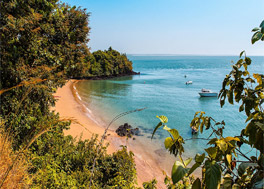
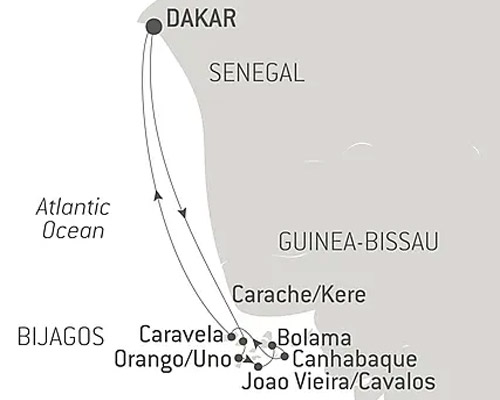
![8 Days - In the Wake of the Spanish Armadas [Oranjestad to Colon] 8 Days - In the Wake of the Spanish Armadas [Oranjestad to Colon]](/images/packages/16-oranjestad-aruba)
![8 Days - In the Wake of the Spanish Armadas [Oranjestad to Colon] 8 Days - In the Wake of the Spanish Armadas [Oranjestad to Colon]](/images/packages/extraimages/1721_16-map-wake_sp_armada_2_1_2026)
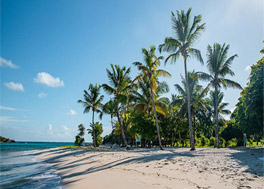
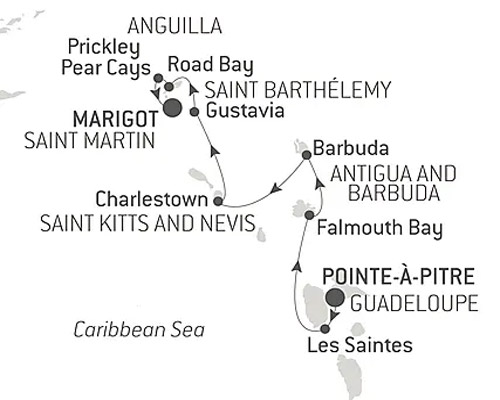
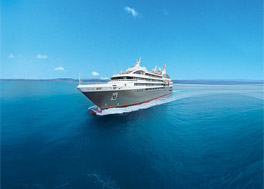
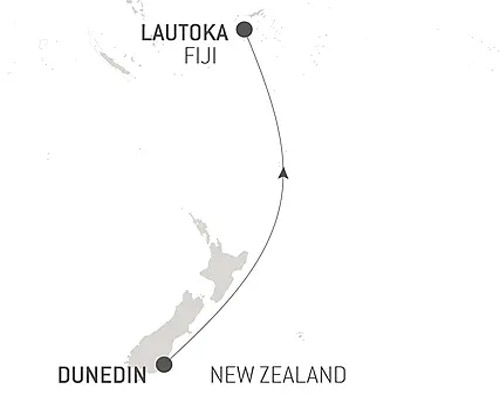
![Odyssey in the heart of Japan's subtropical islands[Hong Kong - Naha, Okinawa] Odyssey in the heart of Japan's subtropical islands[Hong Kong - Naha, Okinawa]](/images/packages/Odyssey-in-the-heart-of-Japan.jpg)
![Odyssey in the heart of Japan's subtropical islands[Hong Kong - Naha, Okinawa] Odyssey in the heart of Japan's subtropical islands[Hong Kong - Naha, Okinawa]](/images/packages/extraimages/6589_Hong-Kong---Naha,-Okinawa.jpg)
